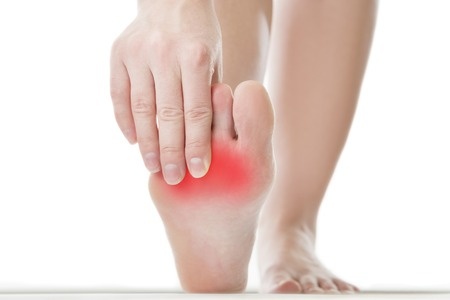
Sesamoiditis is an inflammation of the tissues surrounding the two tiny sesamoid bones that are located in the ball of the foot. Sesamoid bones are free-floating bones that have no solid connection to any other bones. Your kneecap is the largest sesamoid bone. The two sesamoid bones in each foot are about the size of a pea and are connected to the rest of your foot with tendons and ligaments.
What conditions are mimics of sesamoiditis?
Conditions that have similar symptoms in the ball of the foot include neuroma and capsulitis, which is why you should see your foot doctor for the right diagnosis and proper treatment.
Signs and risk factors for developing sesamoiditis include the following:
- Severe pain when bending your big toe
- Swelling in the ball of the foot
- Athletes, dancers, and workers that regularly perform high-stress movements are more likely to develop sesamoid bone problems
Treatments for sesamoiditis include the following:
Resting, icing and elevation will help to reduce swelling and pain. Your foot doctor can help you choose better fitting shoes that have a low heel cup and softer soles to help reduce the pressure on the sesamoid bones. Injections of corticosteroids may also help to reduce pain and discomfort. A special brace or custom orthotic insert may be required to relieve pressure. These are very effective and may have to be worn for a month or longer for proper healing to occur.
If you suspect that you may have sesamoiditis or something similar, seeing your podiatrist is the best way to receive the proper diagnosis and treatment. Call Syracuse Podiatry located in East Syracuse, New York. Dr. Ryan L. D’Amico, Dr. Payel Ghosh and their staff will help you diagnose and treat your foot or ankle condition. Call 315-446-3668 or make an appointment online today.
